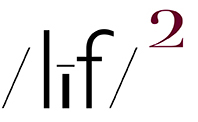Finally settled in at Rist Camp (for the month of September).
During this year's stay I have decided to do a project (in addition to my regular picture making) entitled Rist Camp Diary for which I am making 1 picture a day made expressly for posting on my Instagram page - hobsonspictures. Those pictures will be also made into a book. The first 4 days are posted in this entry.
The pictures for the project will all be made using the iPhone camera module. They will be processed on the iPhone using Snapseed and then made into Polaroids by way of the Polamatic app.
MY RESPONSE to Julian Behrisch Elce's request-I’d love to hear you unpack "I am desperately trying to avoid going all the way,”. Julian's request was in response to my statement that I was "desperately trying to avoid going all the way" over to making all of my pictures with the iPhone camera module.
Let me dispense with psychoanalytic stuff first ... simply put, I sorta feel that, by using the iPhone camera module, I am not taking my picture making seriously enough. That is to write, while I continue to give the exact same consideration to the aesthetics of my iPhone pictue making, the same is not true for the technical image quality side of the equation. The reason for that is quite simple inasmuch as the iPhone camera module can only deliver technical image quality as determined by its sensor which makes image quality a take-it-or-leave-it proposition. So, for me, I have adopted a why worry? be happy attitude.
Now, onto the technical stuff ....In most iPhone camera module (iCM) picture making endeavours, I am quite happy with the technical image quality (tIQ). However, there are picture making situations where the iCM sensor falls short. Not horribly short but certainly short of what a "real" camera sensor can deliver. That written, when I am using the iCM to make "snapshots", those shortcomings matter little or not at all. So, in that application there is no problem.
That written, in my "serious" picture making, I strive for the excellent tIQ that only a "real" camera can deliver in all picture making situations.. And therein lies the reason why I am "desperately trying to avoid going all the way". On a few picture making occasions, I have regretted the fact that I made a picture using only the iCM.
So, here's the deal (for me). After making thousands of pictures with the iCM, I am most certainly capable of recognizing a picture making situation where the iCM will deliver less than optimal results (for my "serious" picture making). In those situations, what I am desparately trying to condition myself to do is to not be lazy-and I have been truly lazy on occasion-and use the "real" camera which is always hanging on my shoulder. In other words, I had forgotten to use the tool which right for the job.
MY CONCLUSION: I began using the iCM as the essential camera for my the new snapshot work. Over time, I was seduced by the iCM's capability of delivering very high iTQ in many picturing situations. But, like all seductions, it has its boundaries and, if you cross those boundaries, the grass will not always be greener on the other side.
Or ...
“Make sure that you always have the right tools for the job. It's no use trying to eat a steak with a teaspoon, and a straw.” ~ Anthony T. Hincks
